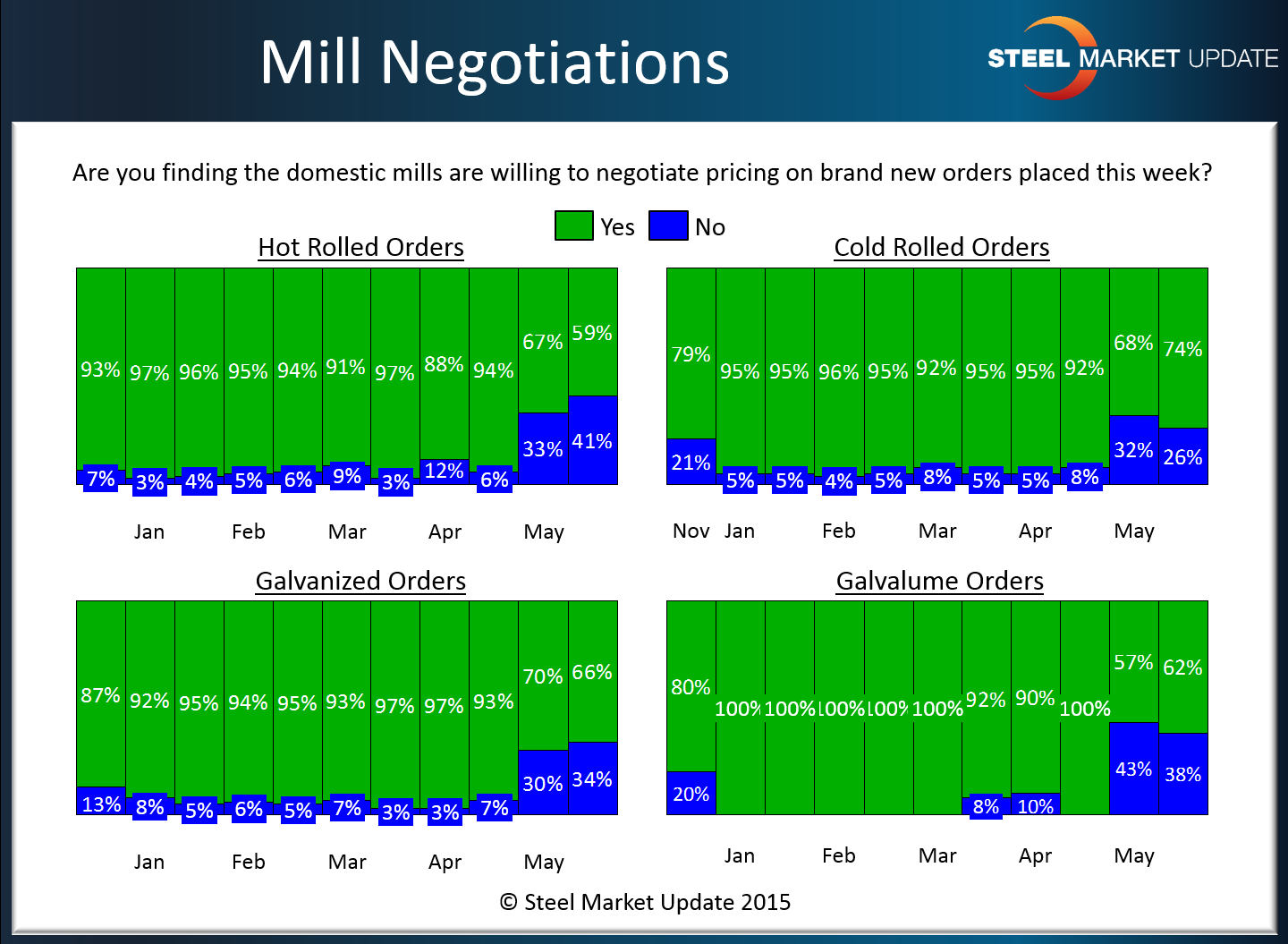SMU Data and Models

Steel Mills Not Yet Negotiating from a Position of Strength
Written by John Packard
May 21, 2015
U.S. and Canadian steel buyers reported mills as less willing to negotiate flat rolled steel prices (hot rolled, cold rolled, galvanized and Galvalume prices) at the beginning of the month of May. Prior to that, the domestic steel mills had been extremely active and willing to negotiate pricing on all products. This, according to our flat rolled steel market survey conducted during the first week of May.
Steel Market Update (SMU) conducted our mid-May survey beginning on Monday of this week concluding our analysis earlier today. We found improvements (respondents reporting mills as less willing to negotiate pricing) on hot rolled and galvanized. The cold rolled and Galvalume results were slightly less optimistic as more respondents reported the mills as willing to negotiate than what we saw at the beginning of the month.
However, the rate of change was miniscule on virtually all products and we are not yet convinced that the industry is able to collect much higher pricing based on these results. We would call the results as being mixed at best and still a far cry from where the domestic mills need to be to push prices even higher from here.
Steel Market Update believes the domestic mills need to get lead times out another week on various products in order to improve their negotiating positions.
To view the interactive history of the graphic above, visit the Steel Mill Negotiations page on the Steel Market Update website here.

John Packard
Read more from John PackardLatest in SMU Data and Models

SMU’s June at a glance
A look at SMU data for the month of June.

SMU Survey: Buyers’ Sentiment rebounds from multi-year low
Both of SMU’s Steel Buyers’ Sentiment Indices edged higher this week. Current Sentiment rebounded from a near five-year low, while Future Sentiment rose to a two-month high

SMU flat-rolled market survey results now available
SMU’s latest steel buyers market survey results are now available on our website to all premium members.

SMU Survey: Sheet lead times pull back after early-June blip, plate holds
Following the uptick seen two weeks ago, lead times eased this week for all four sheet products tracked by SMU, while plate lead times held steady, according to this week’s market survey.

SMU Survey: Pricing power abruptly shifts to steel buyers
The majority of steel buyers responding to our latest market survey say domestic mills are more willing to talk price on sheet and plate products than they were earlier this month. Sheet negotiation rates rebounded across the board compared to early June, while our plate negotiation rate hit a full 100%.

